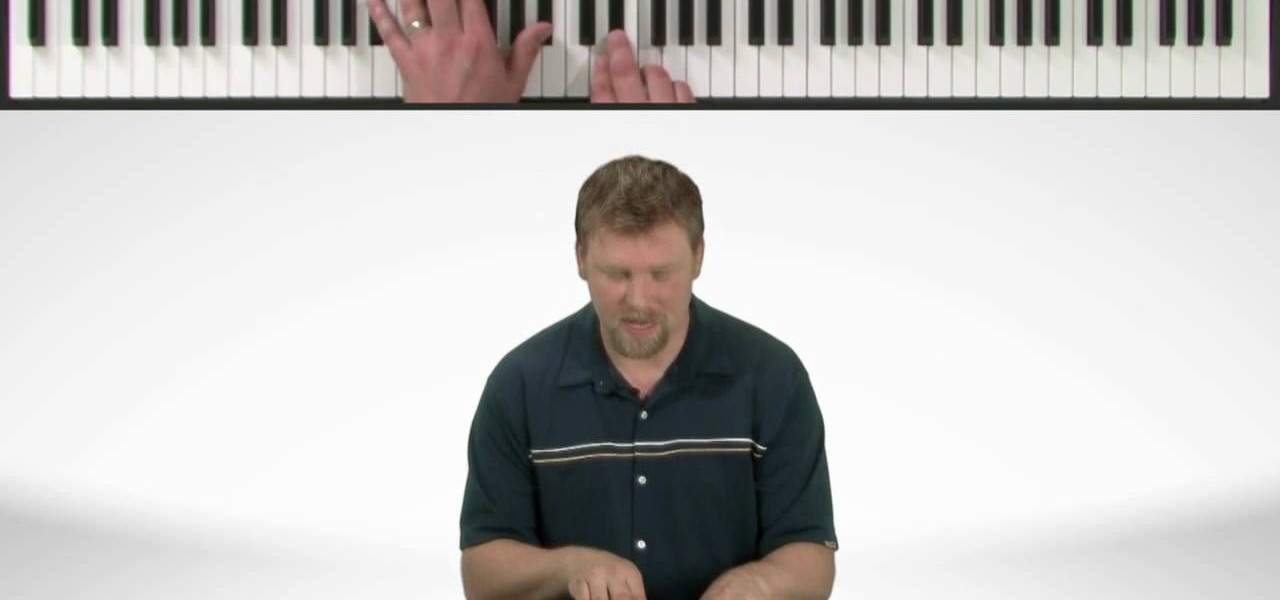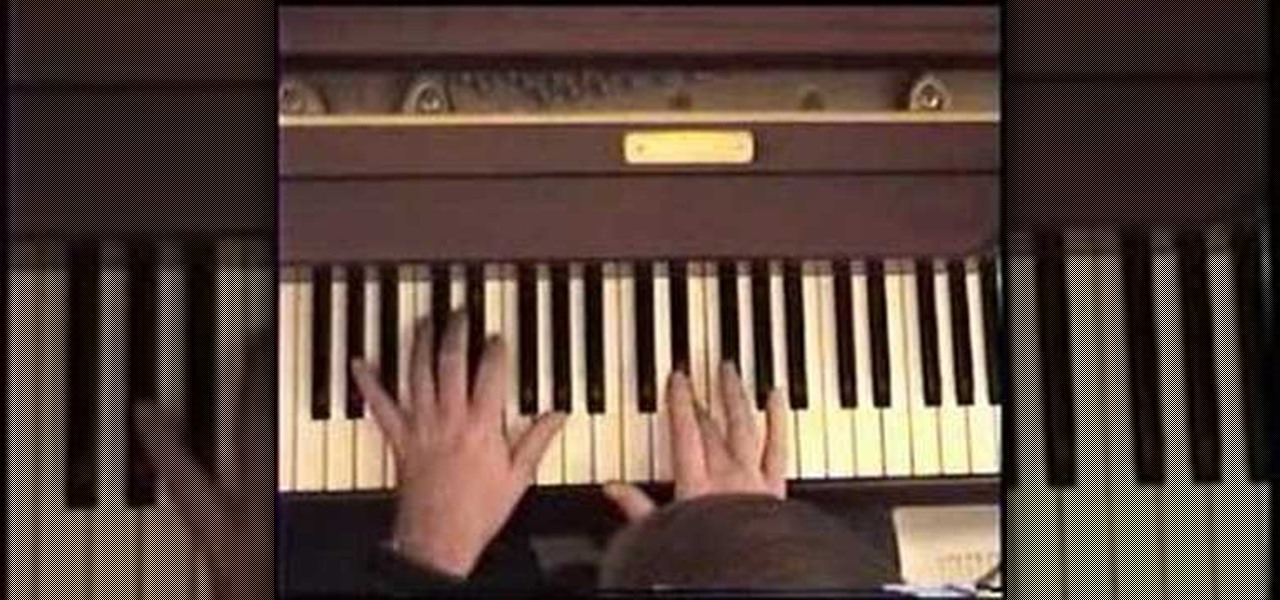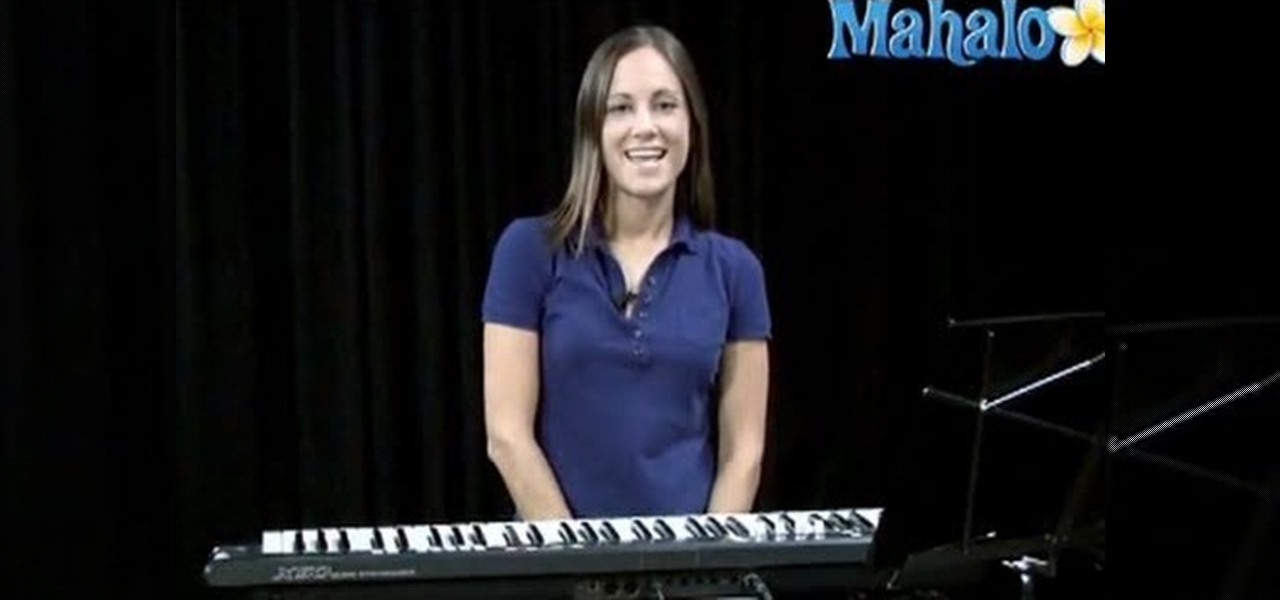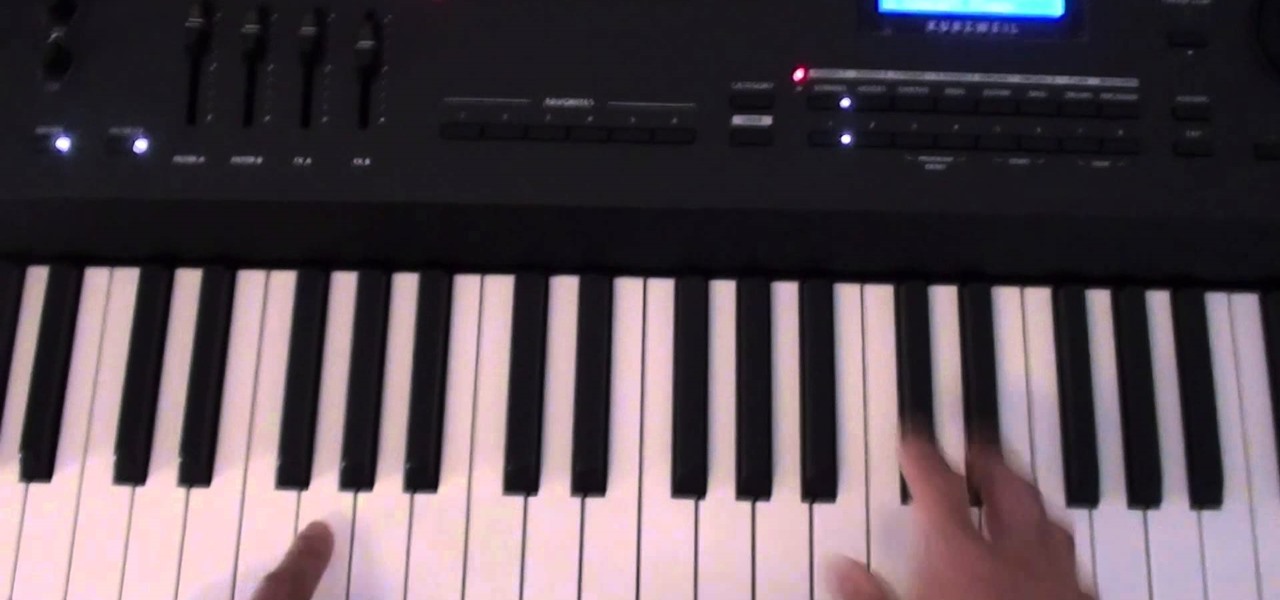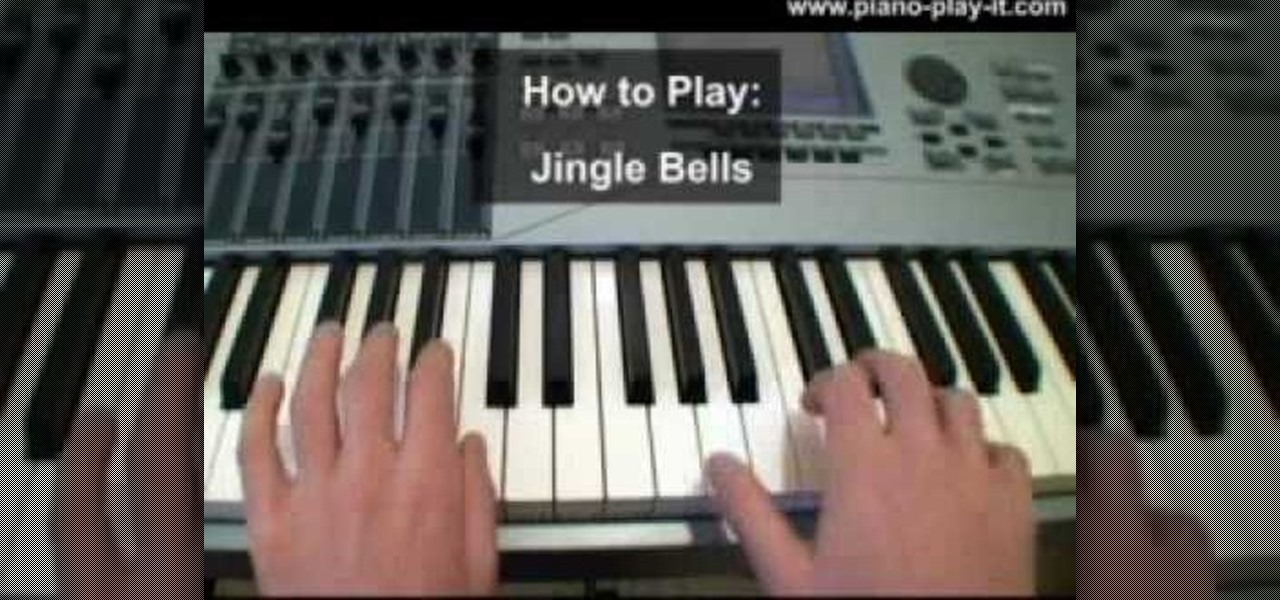Active Piano & Keyboard Posts

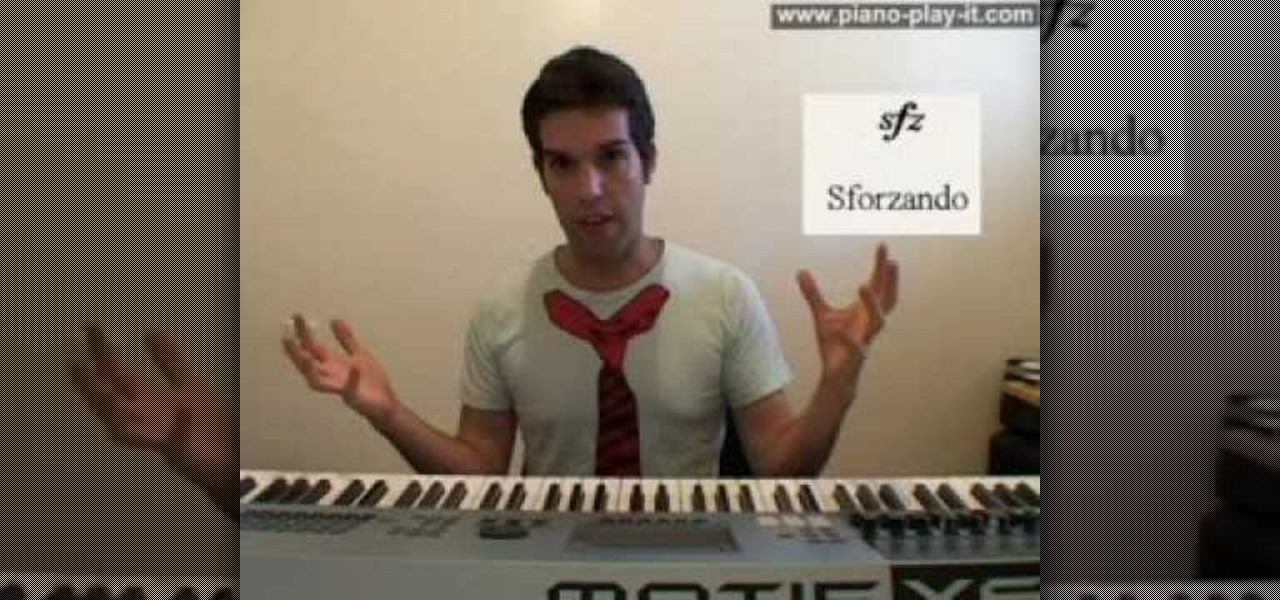
How To: Understand crescendo, diminuendo & other tempo changes on the piano
In this video, we learn how to understand crescendo, diminuendo & other tempo changes. When you are playing piano, you are supposed to play the note until a dynamic change is shown on the music. A sforzando means that you must suddenly play very loudly. This occurs most in a surprise symphony. A crescendo is when you change the volume gradually. As the lines grow on the symbol you will increase the volume or decrease it if it's from larger to smaller. When you play dimiuendo you must not slow...
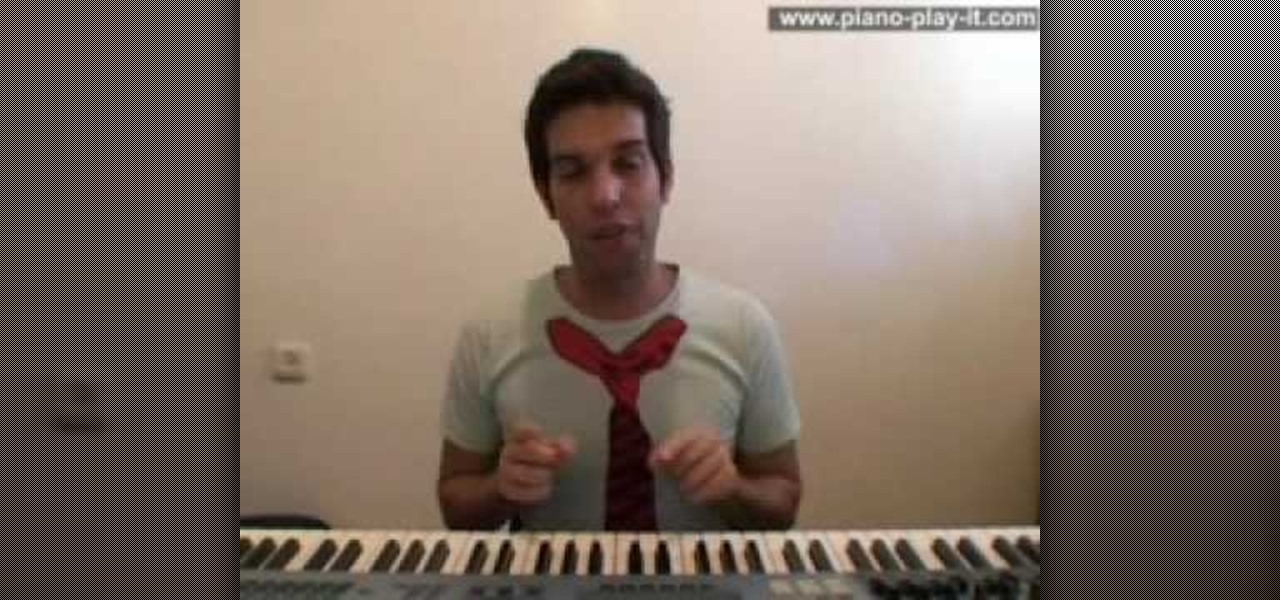
How To: Use allegro, moderato, andante, adagio, ferma tempos in music
In this video, we learn how to use tempo: Allegro, Moderato, Andante, Adagio, Ferma. When you are playing a musical piece it has to have certain notes and speed. You will also be setting a mood with your song as well. Use tempo marks to mark these on your song to make it unique. Learn how to read these mark when you are looking at music on a sheet of notes. Make sure to practice your music to make sure you are playing it at the right speed and taking pauses where appropriate. This will help y...
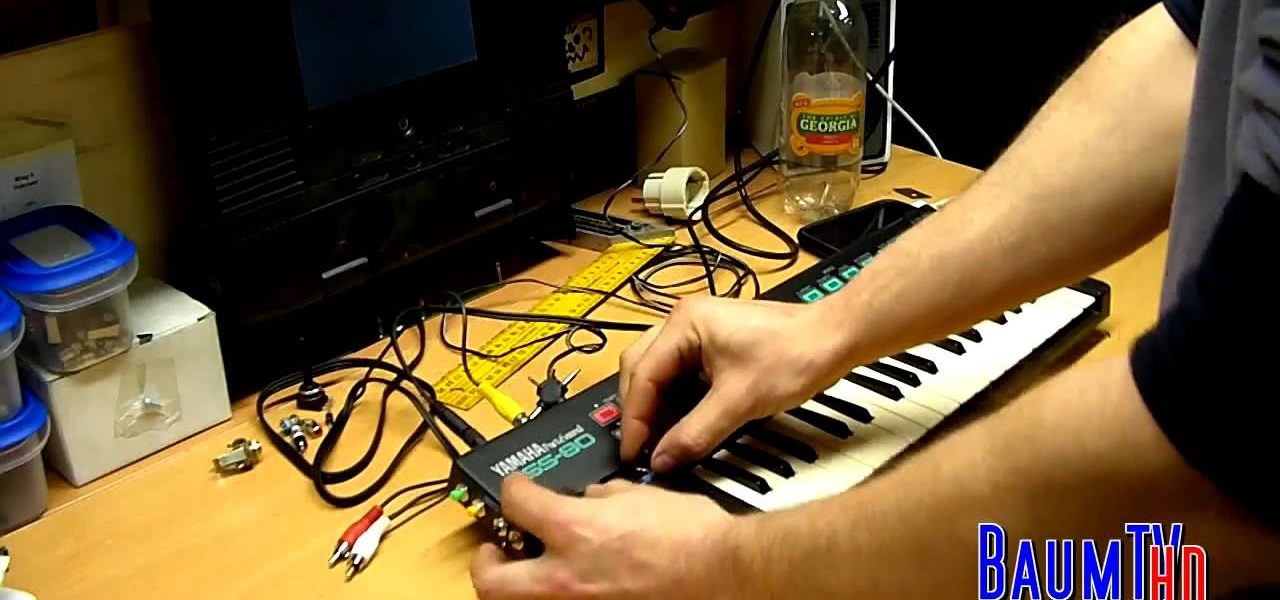
How To: Circuit bend a Yamaha PortaSound PSS-80 keyboard with 10 modifications
If you just happen to own a Yamaha PortaSound PSS-80 keyboard (1989), why not try something a little out of the ordinary— like circuit bending? Circuit bending can help you create a new musical sound via your keyboard, and this video tutorial will show you 10 different ways to circuit bend.
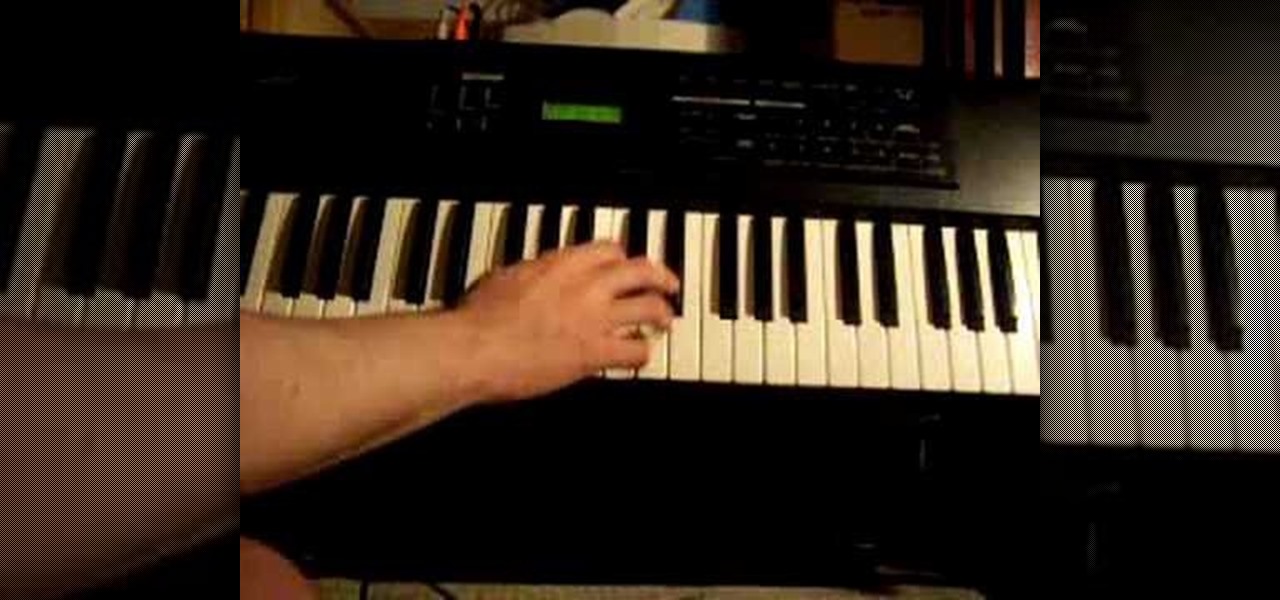
How To: Play "Enjoy the Silence" by Depeche Mode on piano
Are you a fan of Depeche Mode? This tutorial is designed to help you play "Enjoy the Silence" by Depeche Mode on the piano or keyboard. This song isn't taught in a literal or mechanical fashion but rather is taught to grasp the song's structural parameters & essence. This video will help you understand the body of "Enjoy the Silence" by Depeche Mode and enables you to make it your own. This how to video is for intermediate to advanced piano students. With this lesson you will be able to play ...
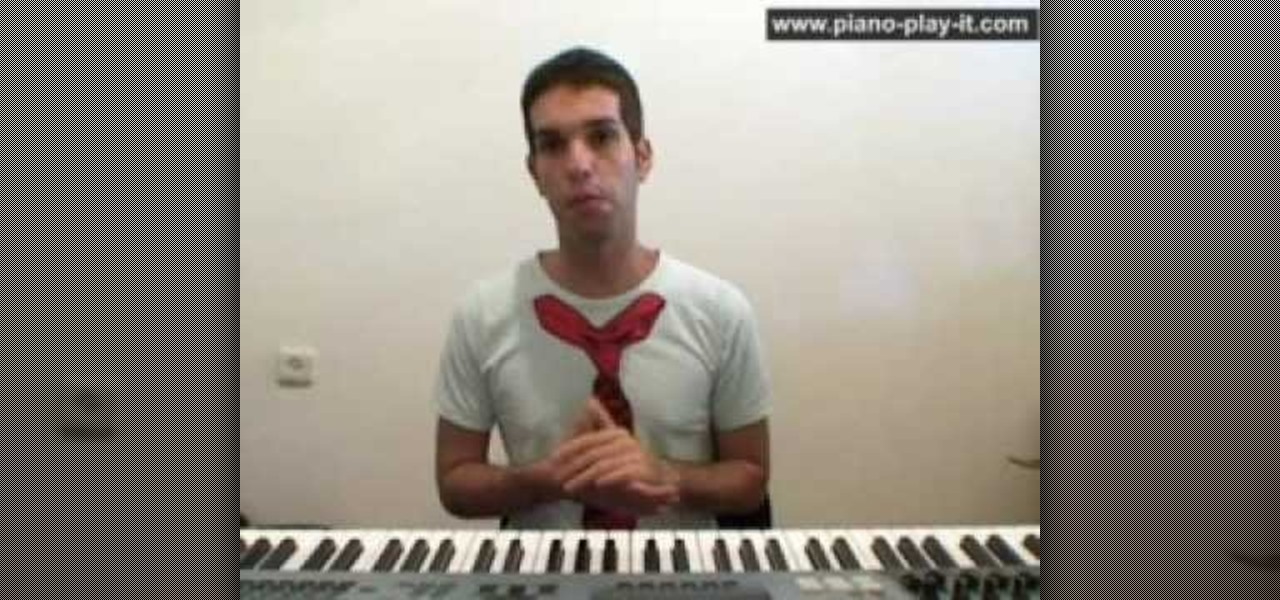
How To: Comprehend quarter, half, and whole music rests
In this tutorial, we learn how to understand music rests (Quarter, half, & whole rests). Rests are signs of silence while you are playing a song. Silence is a very important element in creating music, giving the audience time to reflect on the notes that they just heard. The whole note lasts for four beats and has two half notes. Every half note has a quarter not and every quarter note lasts one beat. The quarter rest means you will count one beat where you will lift your finger from the key ...
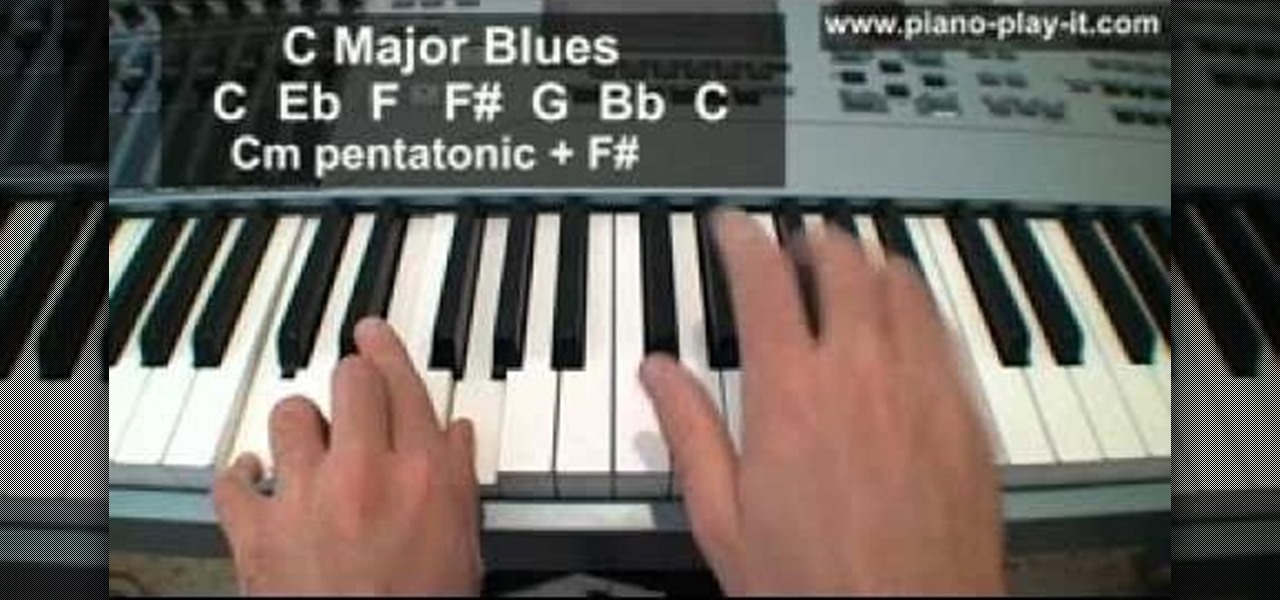
How To: Play the Blues scale and other licks in the right hand on the Piano
As a musician, whether it be Piano, Guitar, Bass, vocals, what have you, learning the Blues is incredibly important to not only being a better musician, but also to passing on the heritage of American music in general and keeping it alive! In this fantastic lesson you learn how to play the Blues scale, licks and some right hand technique to get you started!
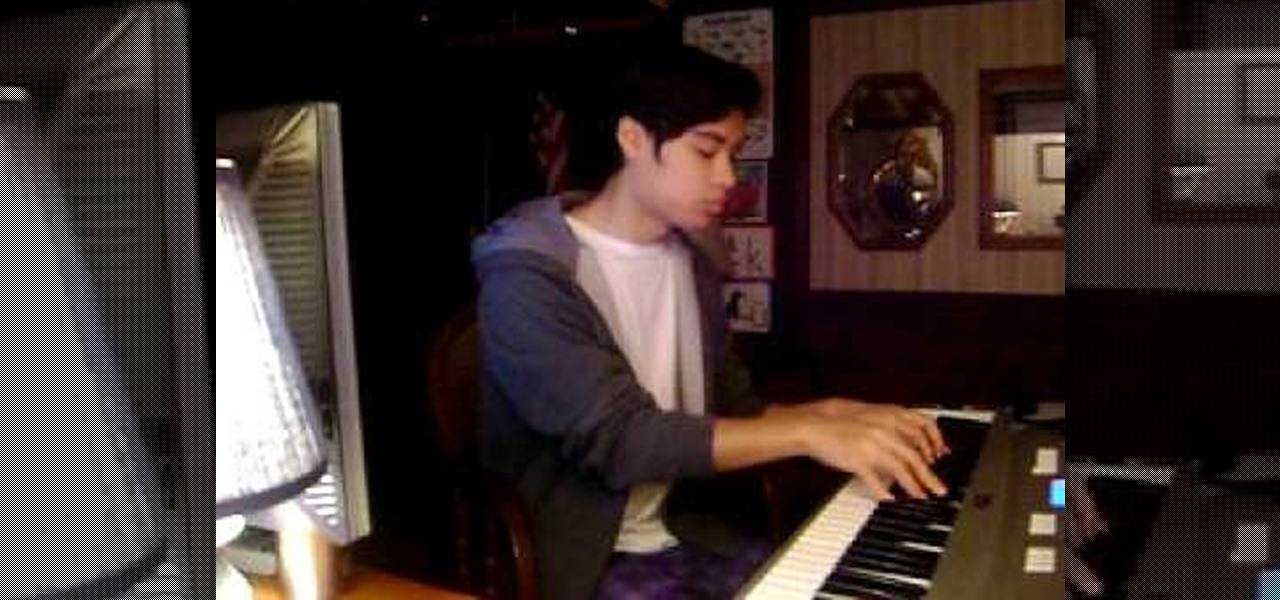
How To: Play a piano instrumental cover of Justin Bieber's "Stuck in the Moment
If you like Justin Bieber and you like to play piano, oh boy do we have a video for you. This video will teach you how to play a solo piano instrumental cover of Justin's hit song "Stuck in the Moment". It's a very pretty song and pretty easy to play, so check it out!
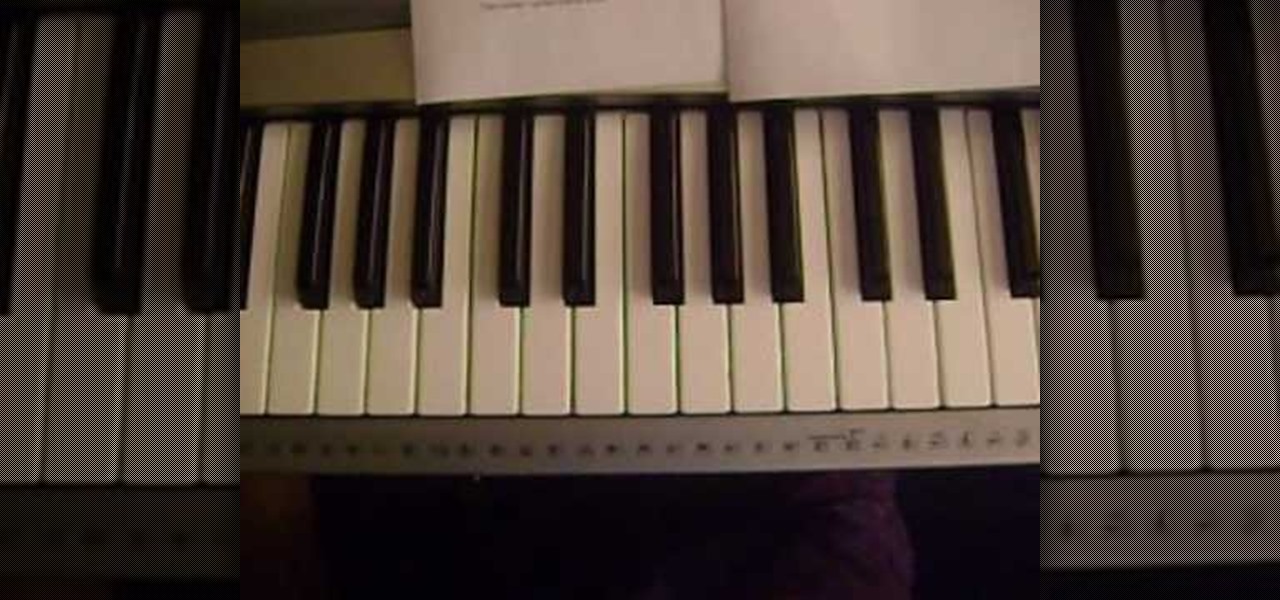
How To: Play a piano cover of the Drake song "Find Your Love"
Drake is one of the biggest rappers in the game right now, and "Find Your Love" has been one of his biggest singles. This video will teach you how to play a really pretty instrumental cover of the song on piano or keyboard. The creator even posted the notes in written form here.
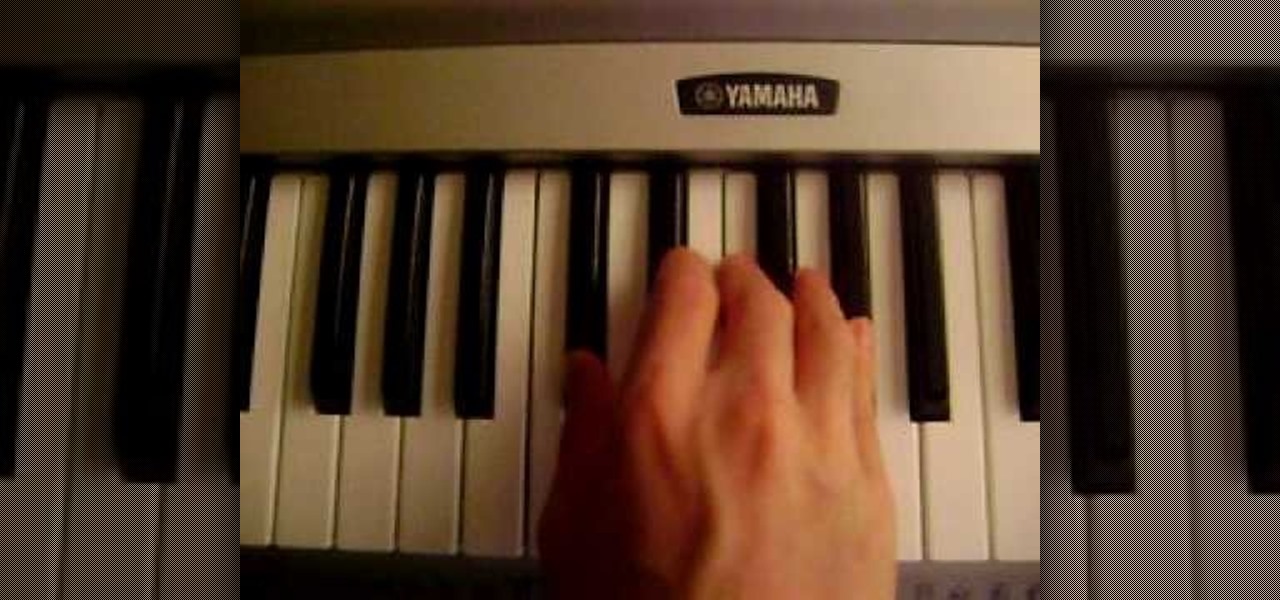
How To: Play the Justin Bieber song "U Smile" on piano
Justin Bieber appears to be here to stay, at least until his voice gets deeper, and his parade of hit songs continues unabated. This video will show you how to play one of his many huge singles, "U Smile" on the piano. You can even check out the sheet music to the song here.
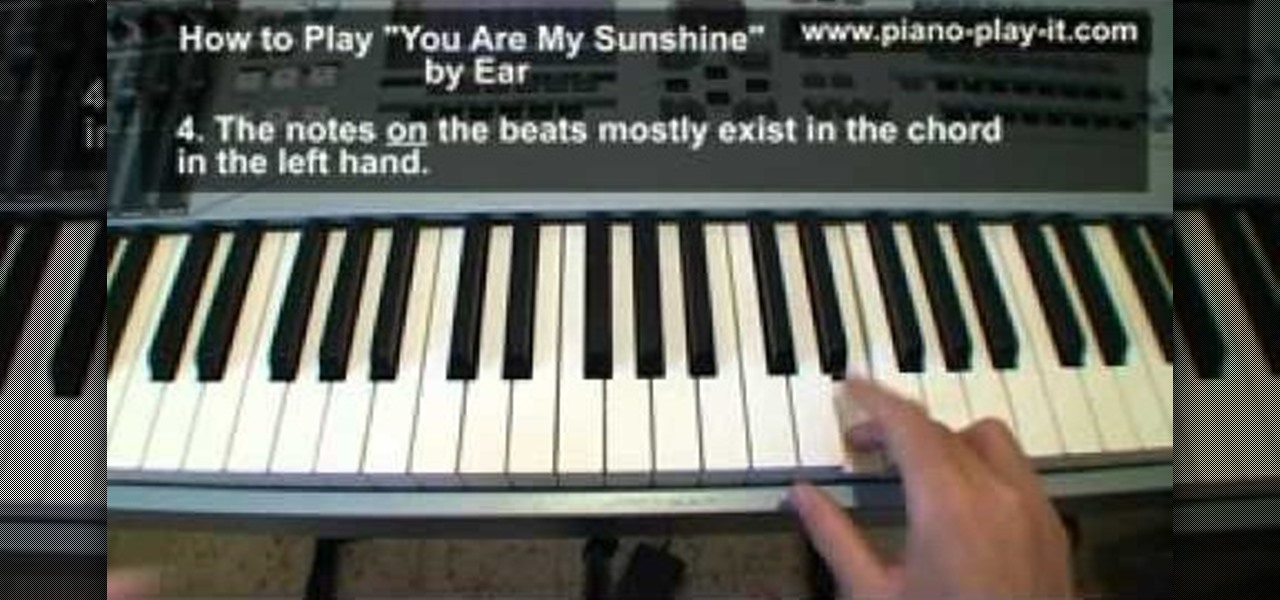
How To: Play various three chord songs by ear on the piano based off of melody
Ear training is incredibly important to any musician. Knowing to hear and identify root and chord movement and being able to analyze a chord progression quickly is so important to your career. In this video you will get a great ear training lesson on how to analyze the chord progression of a song simply by using the movement of the melody to identify the tonic and chord progression.
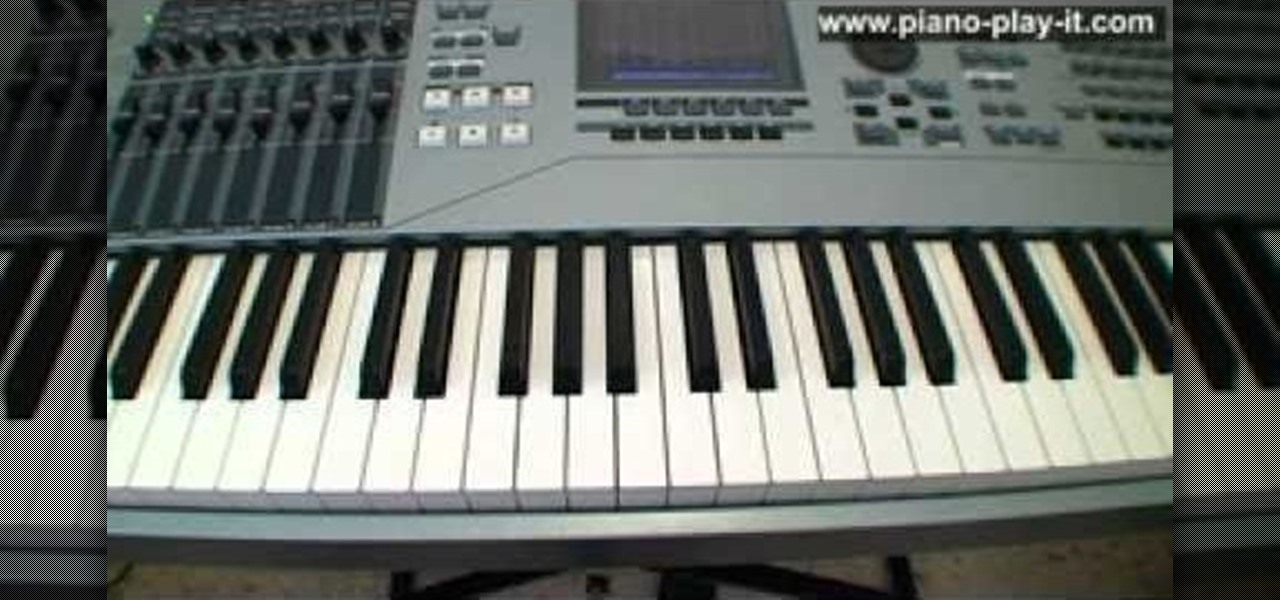
How To: Play the 12 bar blues on the piano in both major and minor tonalities
The 12 bar Blues is something that EVERY musician should know how to play. It may be "simple music" but as they say, "simple music is the hardest kind of music to play". Understanding the theory behind the 12 bar Blues is crucial to feeling measures and also gives you a chance to really make a very simple three chord phrase your own. In this video you will learn how to understand, play and feel the 12 bar Blues in it's various forms including the major, minor and dominant Blues.
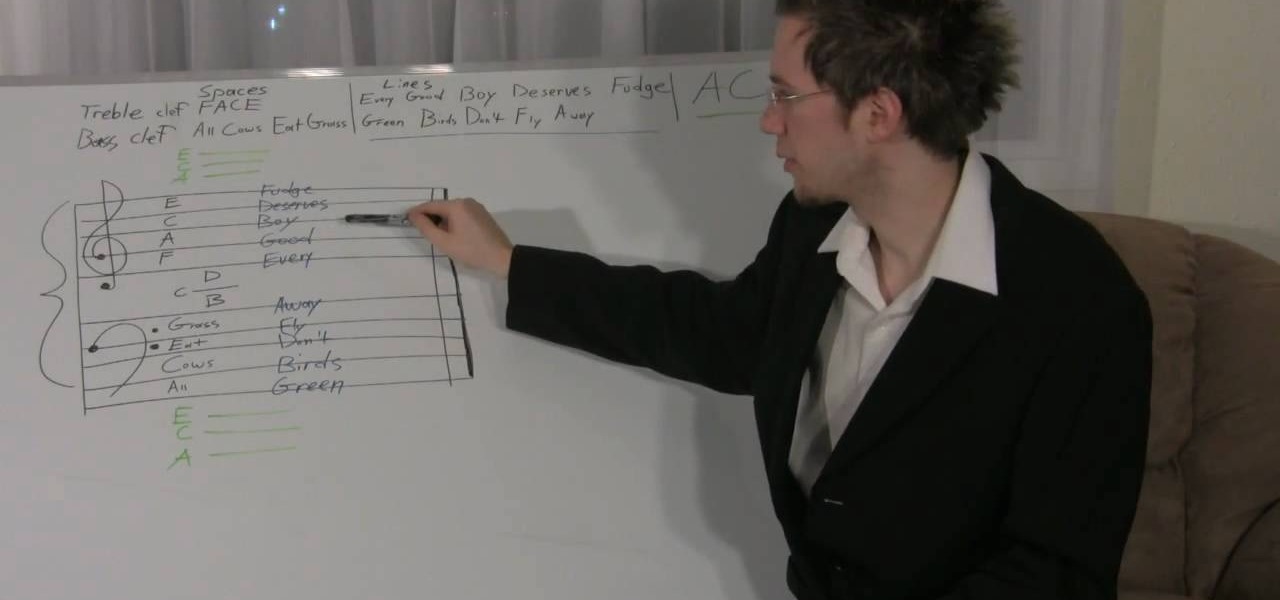
How To: Read treble and bass clef lines and spaces
Now that you know what a staff is, how many lines and spaces are in a staff, and what the different clef's are, it's time to learn where the notes go in each one. It's crucial to understanding note placement and everything else that involves using the staff to learn the sayings for each space and line. For the Treble Clef spaces, it's "FACE", for Treble Clef lines it's "Every Good Boy Deserves Fudge", for Bass clef spaces it's "All Cows Eat Grass" and for the lines he uses "Green Birds Don't ...
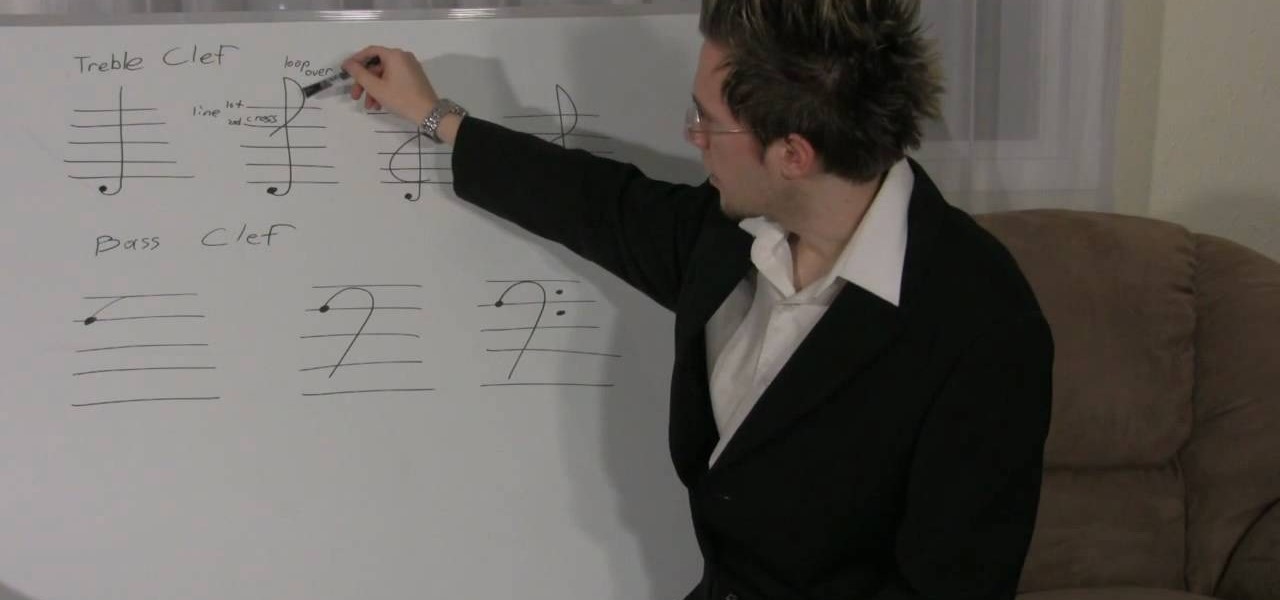
How To: Draw and use the staff, bar lines, treble and bas clef, and the grand staff
Being a musician, whether experienced or just starting out, if you don't know your basic music theory, then you're selling yourself short on a wealth of knowledge! If you're just getting started and have never learned theory, this is where you begin. In this video you will get a basic over view of the staff, bar lines and double bar lines, treble clef, bass clef and the grand staff.
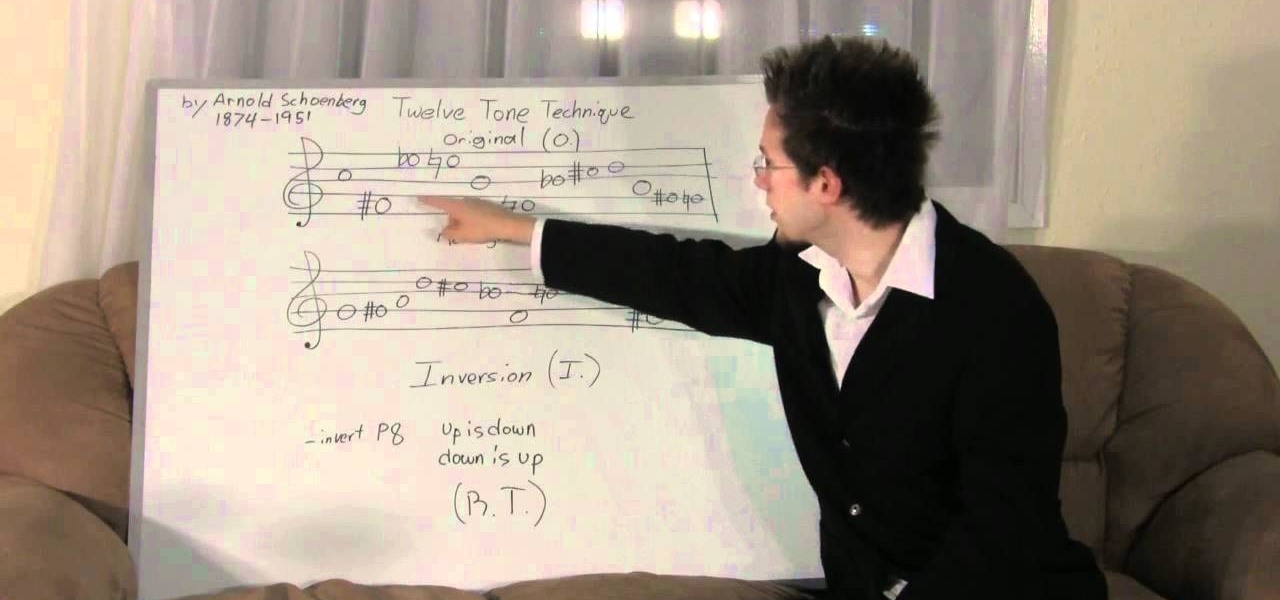
How To: Use the blues scale, twelve tone row technique, polychords, and tone clusters
Music theory, for any musician, is EXTREMELY important to know if you expect playing in any form of professional capacity. But if you can't afford to go to Berklee College of Music or Musician's Institute, then you can get almost the same education in this great video! In this video you will learn the basics of the minor Blues scale, 12 tone technique, polychords, chordal chords, and tone clusters. Truly amazing work and make sure you have a pen and piece of paper to take notes!
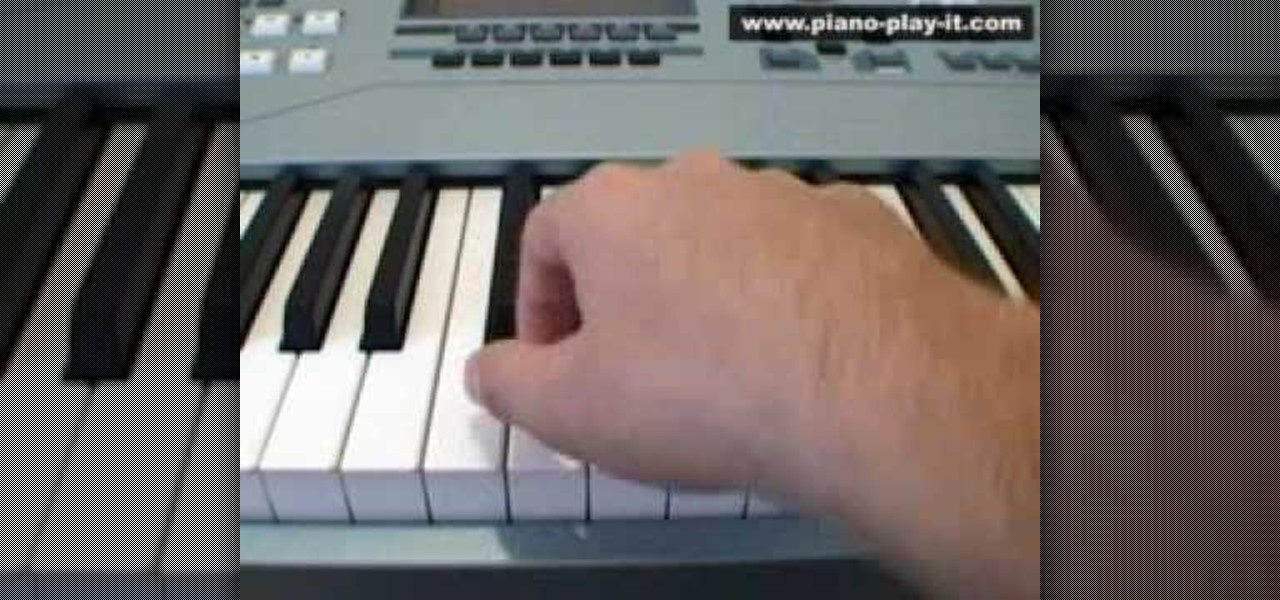
How To: Play piano using piano legato and staccato techniques
In this video, we learn how to play piano using piano legato and staccato techniques. These techniques are when you do not have any break in how you are playing, it all flows smoothly. You want to create a feeling of symmetry with the music so it all flows together seamlessly. To practice this, you will use one hand on the piano keys and play from A going to C. One you have done this, pay attention to your finger placement and then practice with the other hand. As you memorize this, you will ...
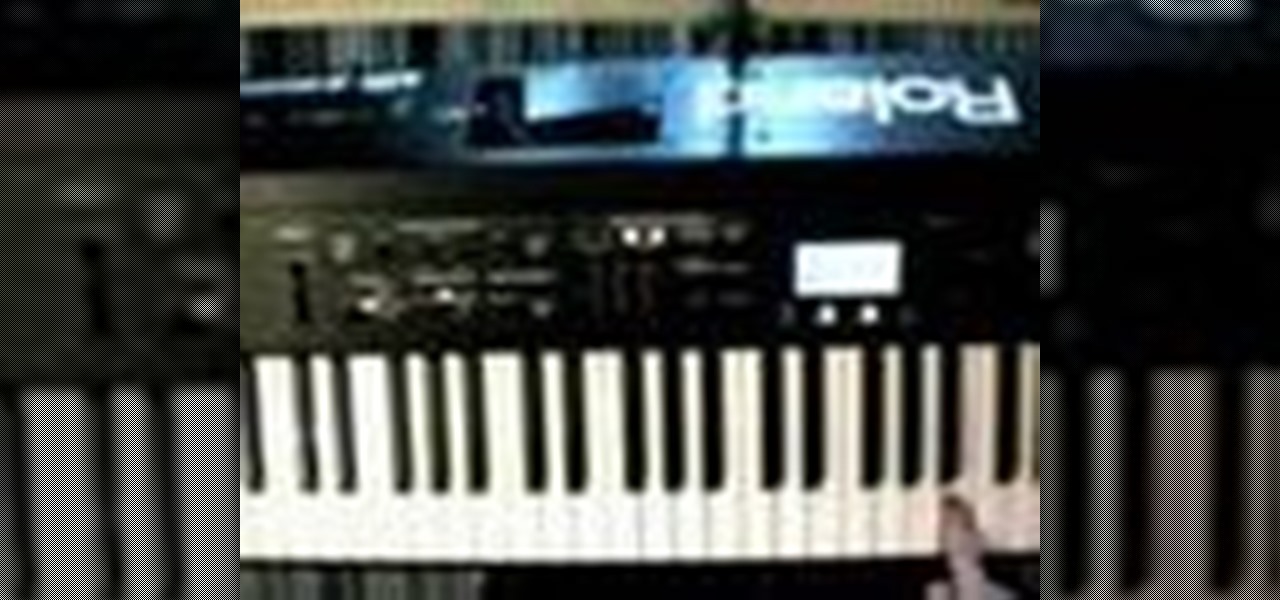
How To: Play the intro from "The Winner Takes It All" by ABBA
In this tutorial, we learn how to play the intro from "The Winner Takes It All" by ABBA. You will want to start out by playing the intro to this ABBA song. Once you have done the intro to the song, you will continue onto the first verse of the song. Make sure to pay attention to the keys and use the right and left hand while playing. Continue on to play the rest of the verses and the chorus of the song. Finish off with the last verse, then go back over the song adding in the lyrics and perfec...

How To: Play sixteenth notes and sixteenth rests
In this video, we learn how to play sixteenth notes and sixteenth rests. Start with the whole note and figure out how many beats it is worth. Treat this as a whole and then find the half note for each whole notes. If you continue to divide, you will end with two quarter notes for the half notes and will end with four beats. Two eighth notes and a quarter note will end the process and you will have eight eighth notes. You can divide all eighth notes to two sixteenth notes. There are many diffe...
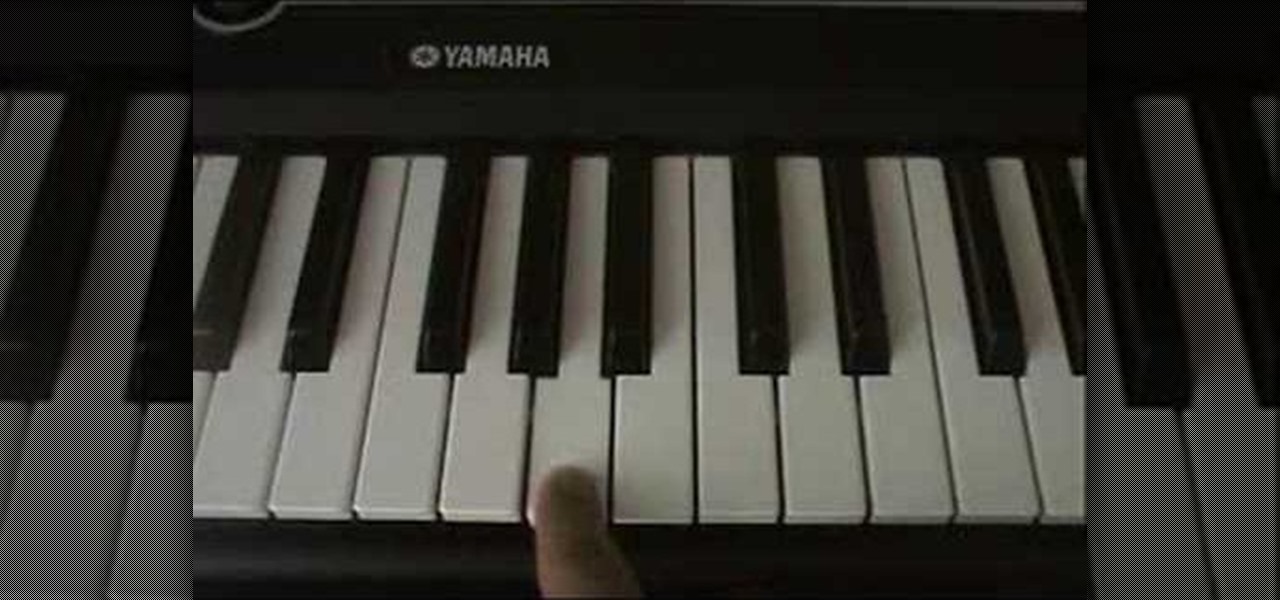
How To: Play Bingo on a piano
In this tutorial, we learn how to play Bingo on the piano. You will want to start out with the notes in front of you so you know which keys to play. Play the first part of the song first. You will notice that you play the same keys over and over again while doing this song. Break it down into sections so you have all the correct keys and listen as you are playing. Once you have finished playing all the sections, bring it together to create the entire song. Now add in the lyrics to the song an...
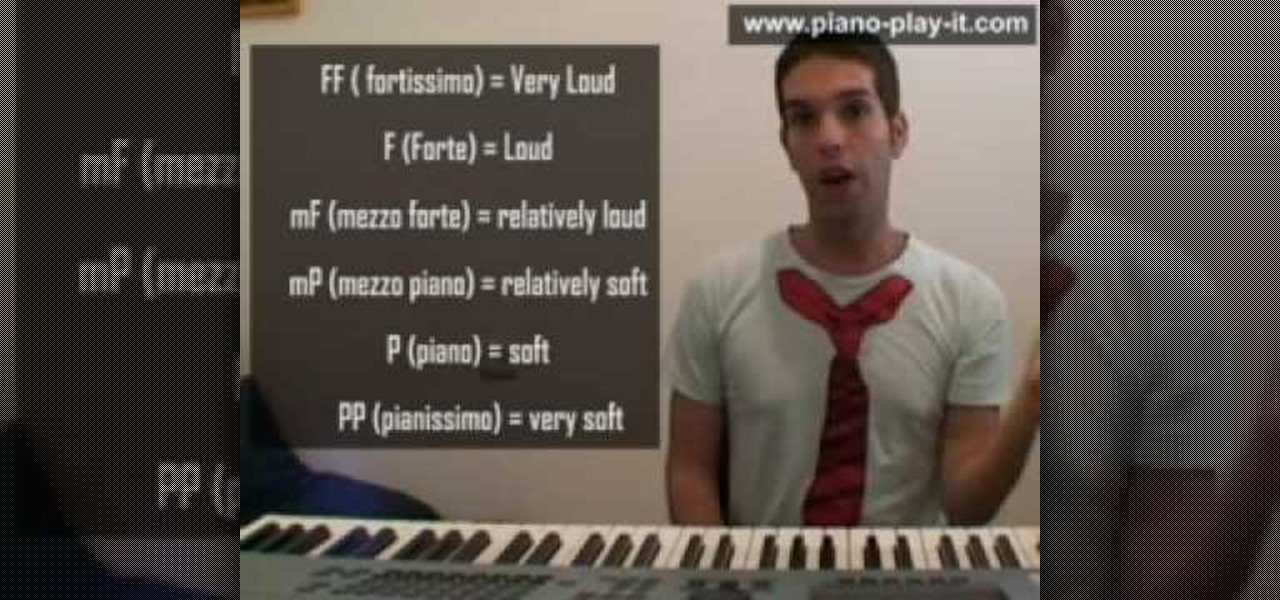
How To: Use music dynamics (Forte, Fortissimo, Pianissimo)
This video presents a piano tutorial which explains music dynamics in playing music, which illustrate a change in the volume or intensity in your playing. The basic dynamics are forte (f), which means to play loudly, and piano (p), which means to play softly. Notations added to the left side of forte and piano signs such as mF and mP signify mezzo forte and mezzo piano, meaning that the part should be played relatively loud and relatively soft, respectively. FF and PP, fortissimo and pianissi...
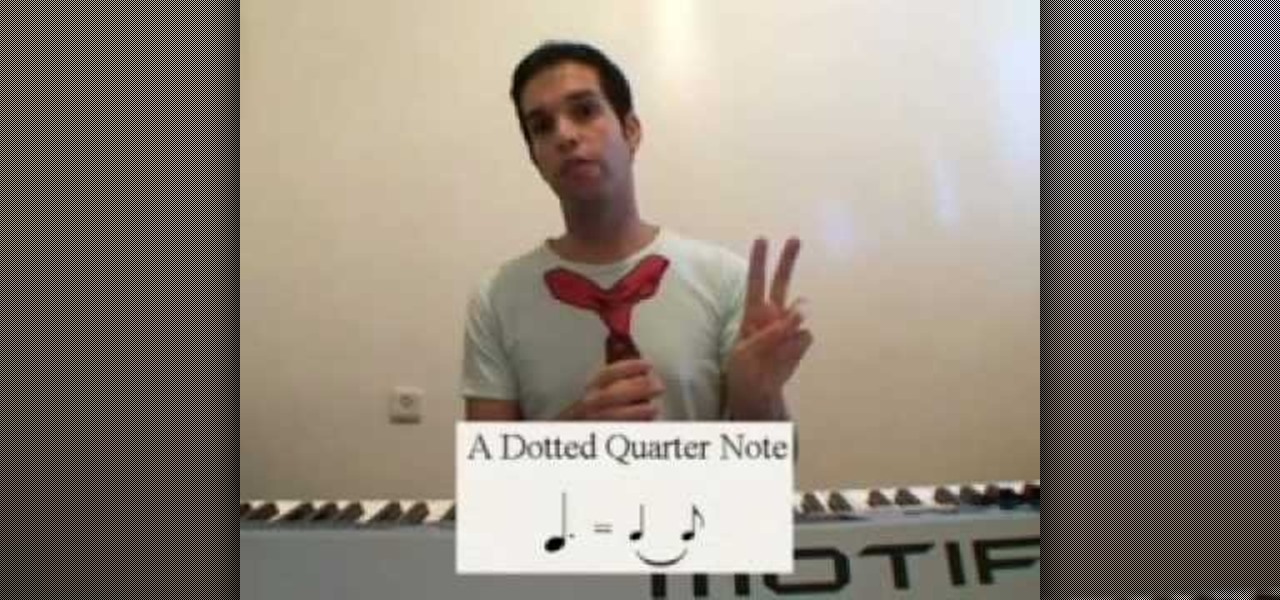
How To: Master dotted whole notes, half notes, and quarter notes
In this tutorial, we learn how to understand dotted notes (Dotted whole, half, quarter). Dotted notes are a dot after a note that add more to the duration of the note. A whole note is four notes, adding the dot adds two more beats to the note. A whole note with a dot is worth six beats. Basically, you will have to read the music to see if it's a half a note or a whole note, then subtract the dot from the note to see how many notes that specific part of the song is. You will need to be familia...
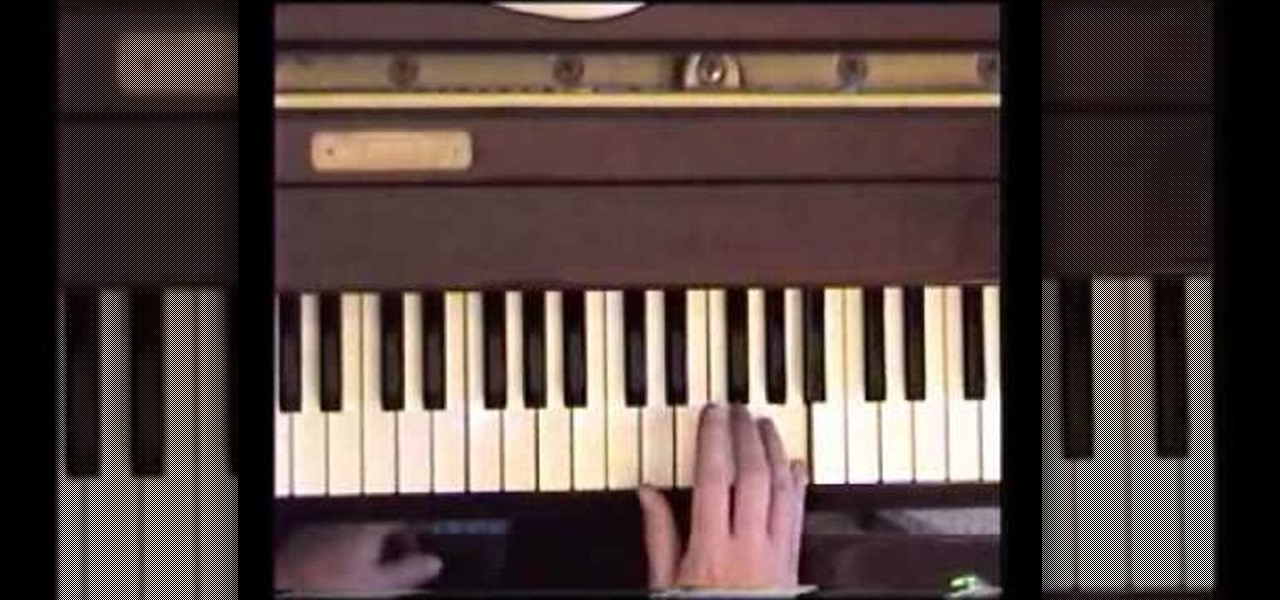
How To: Play "Bennie and the Jets" by Elton John
In this video, we learn how to play "Bennie and the Jets" by Elton John. Start out with A, E, C. Next, go to the G and then to the A. After this, go to B, A, A, sharp, and D. After this, you will have started to do the intro to the song. You will be playing with your right hand during this. Next, you will trip again and go to A, A sharp, B, A sharp, G, E, then finally to the G in the new measure. Continue to play until you reach the end of the song. You will go through all the different keys ...
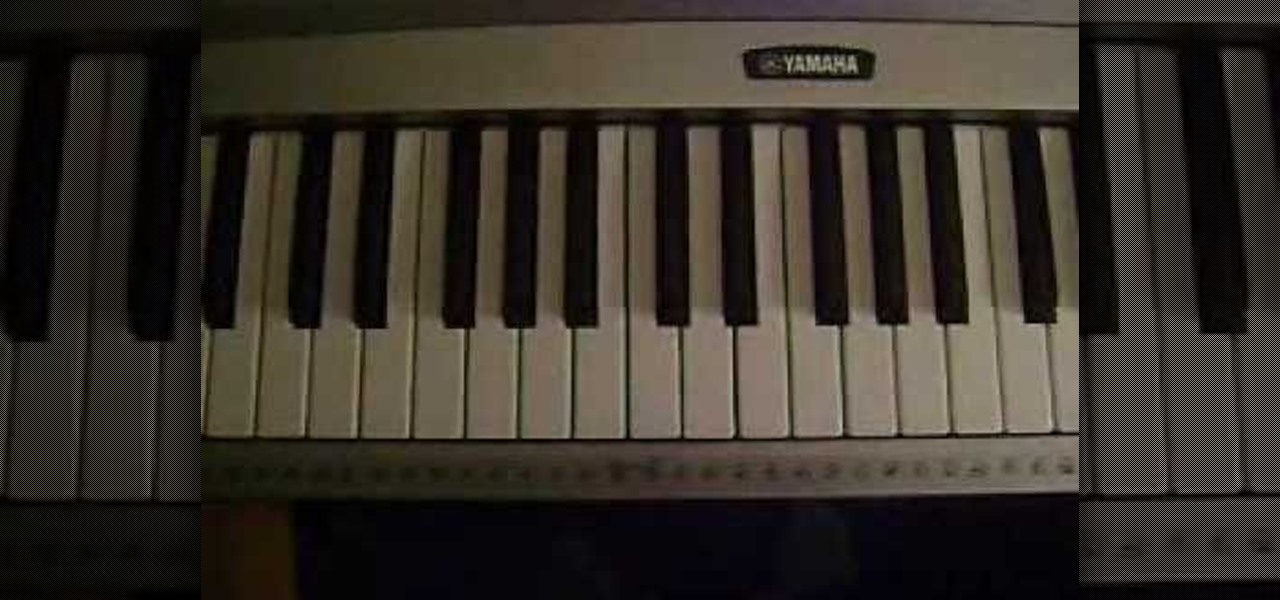
How To: Play the song "Black Keys" by the Jonas Brother on piano
The Jonas Brother may not be the kings of pop anymore since Nick Jonas emergence as a solo artist. Their songs still resonate with their millions of adoring fans though. If you play a little piano and count yourself among those fans, give this video a try. It will show you how to play a cover of their hit song "Black Keys" on piano.

How To: Play "BigCityDreams", "DareDistance" and "She'sGotStyle" by NeverShoutNever
NeverShoutNever are a pretty cool band, but their songs are ridiculously easy to play on guitar, piano, or shamisen. So easy, in fact, that this video will teach you how to play three entire songs on piano which all use the same chords. They are "BigCityDreams", "DareDistance", and "ShesGotStyle".
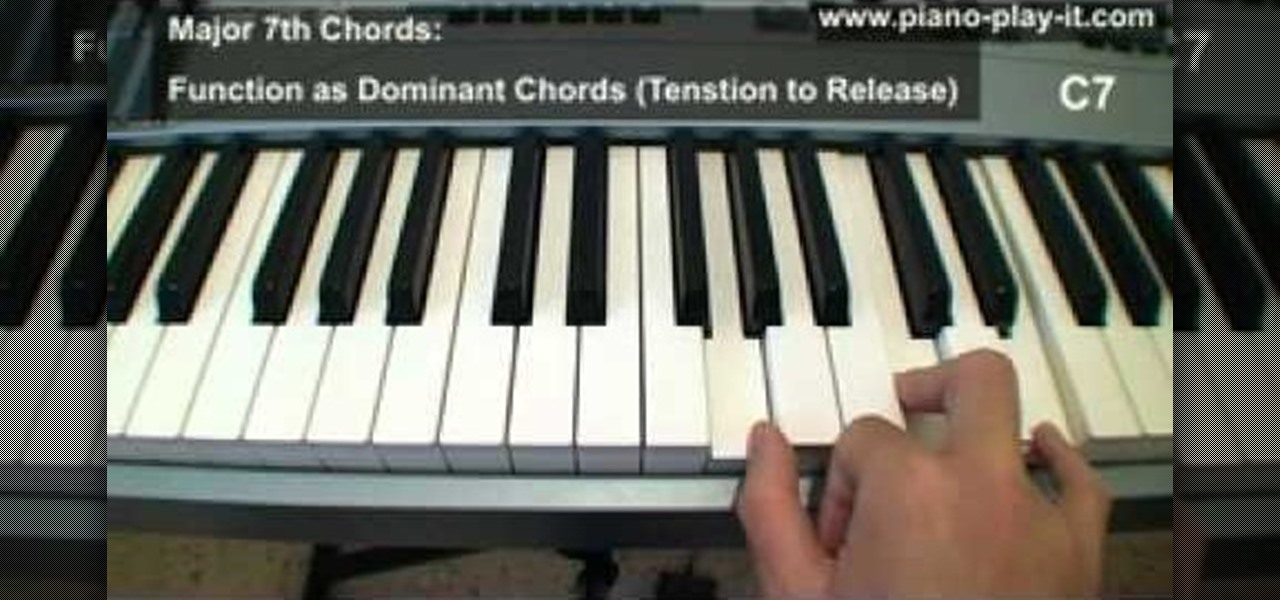
How To: Construct triad chords and 7th chords on the piano
This piano lesson is both a music theory approach to playing and an actual working piano lesson, which offers you a great chance to apply what you've just learned. Follow along with the video to learn how to understand and construct triad chords and, later, 7th chords.
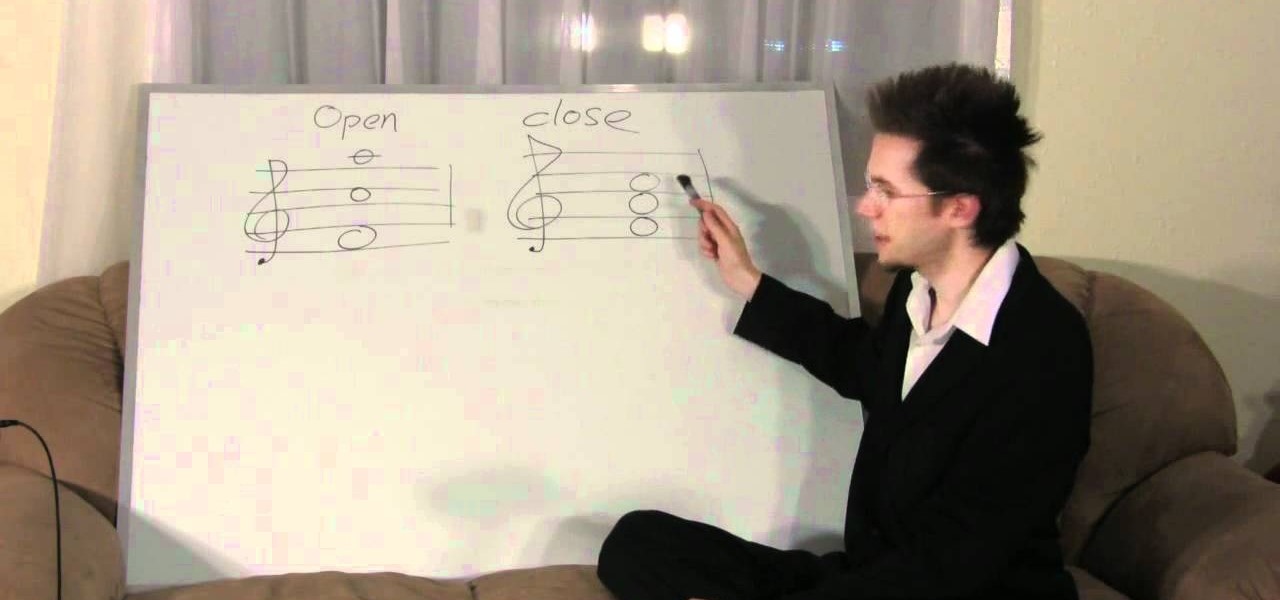
How To: Play open and closed chords on the piano
Open chords are pretty simple to understand. They're basically notes in a chord that you don't play or finger.
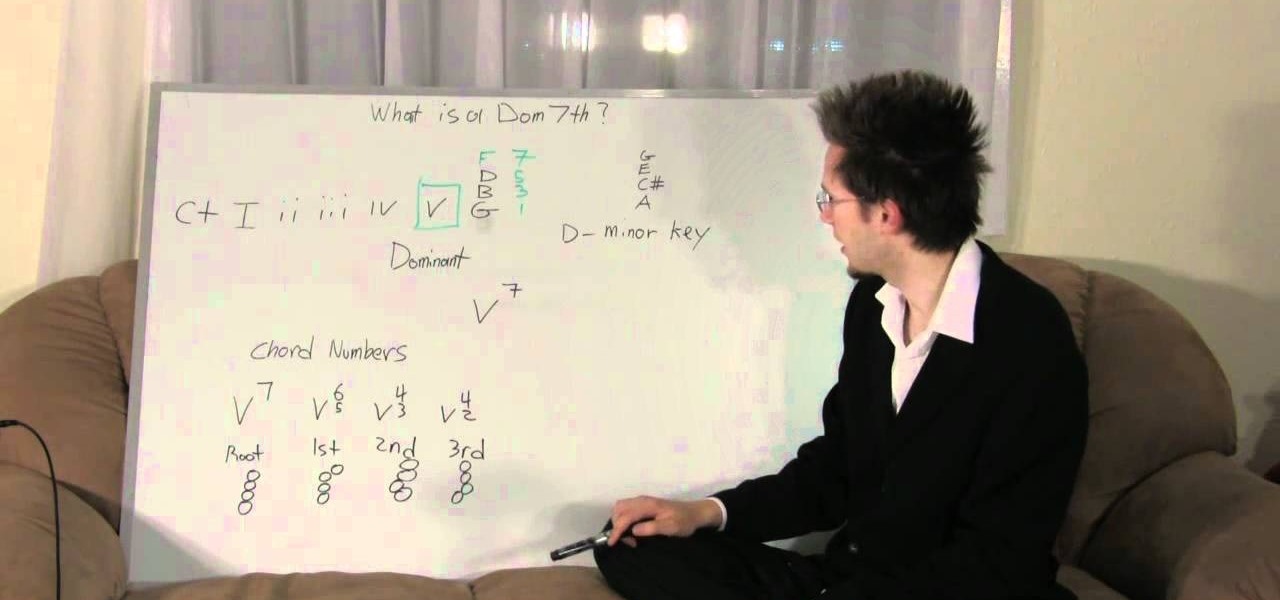
How To: Play dominant and dim 7th chords on the piano
No matter how great you are at playing the piano, and even if you're a natural who can strum out Rachmaninoff perfectly simply by listening to it once, music theory should still be a vital part of your music learning process. Whether you're a beginning piano player or an advanced professional looking to polish up your music theory skills, you should check out this music theory tutorial.
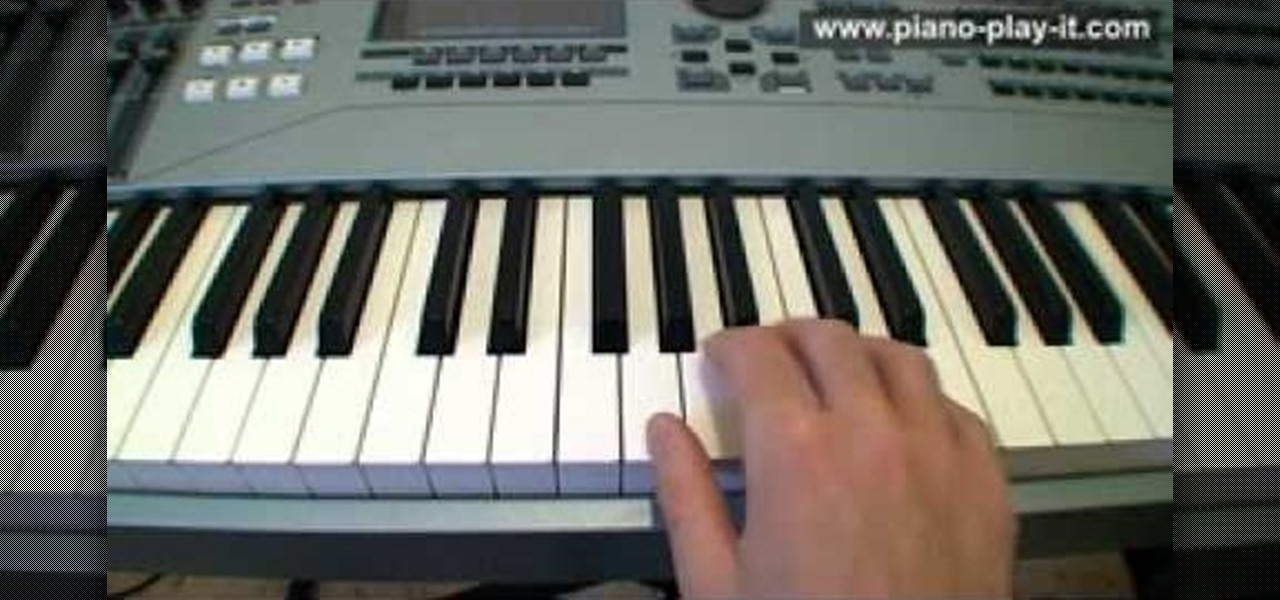
How To: Form and learn about suspended chords on the piano
A suspended chord is a chord in which the third has been omitted to be replaced by a perfect fourth or a major second. Because there is no minor or major third in the chord, the result is a suspended, or open, sound. This means a previous chord is carried over to the next chord.
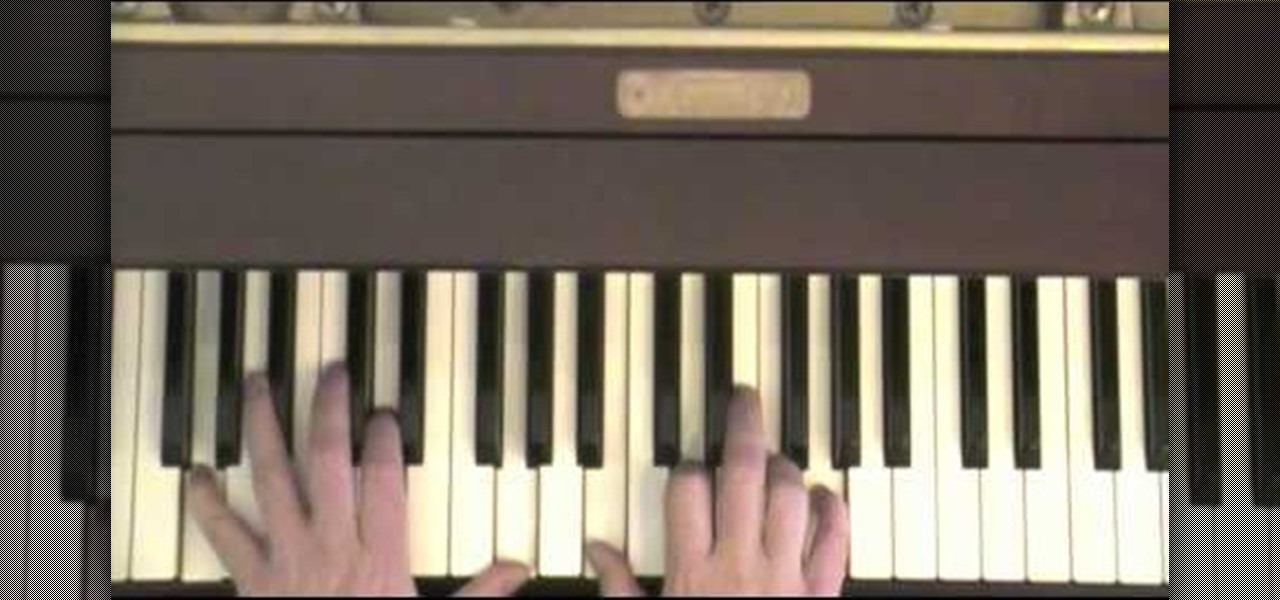
How To: Play "Your Mother Should Know" by the Beatles on the piano
"Your Mother Should Know" isn't one of the Beatles' most famous songs - it certainly hasn't garnered a sort of cult following like "Hey Jude" or "Yellow Submarine" - but it happens to be a song that's super piano friendly.
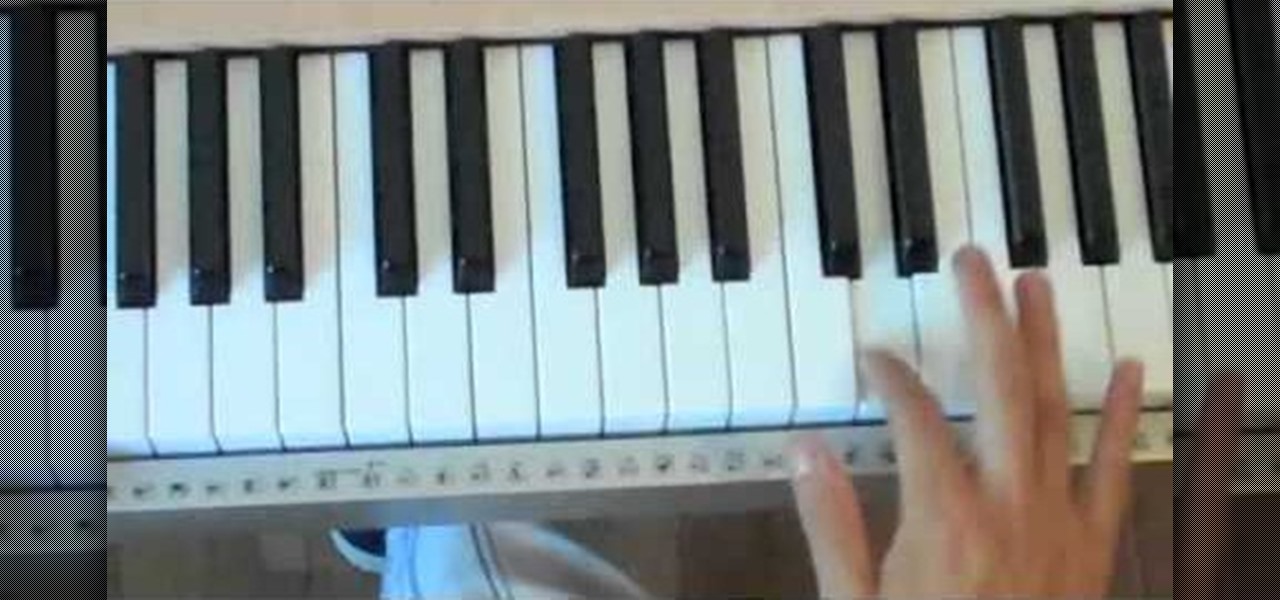
How To: Play "Break Your Heart" by Taio Cruz and Ludacris on the piano
"Break Your Heart" by Taio Cruz and Ludacris may not be the most romantic song in the world - it's about a player warning a girl about dating him because he's only going to, you guessed it, break her heart - but it certainly sounds like one of the best songs we've heard in a while.

How To: Play diatonic circle chord progressions on the piano with "I Will Survive"
Unless you're a music theory buff or taking AP Music Theory in school (forced or otherwise), then the only word in "diatonic circle chord progressions" that makes sense to you is "circle." But the fancy schmancy term is just an elaborate way of saying you're playing chord progressions based on the circle of fifths.
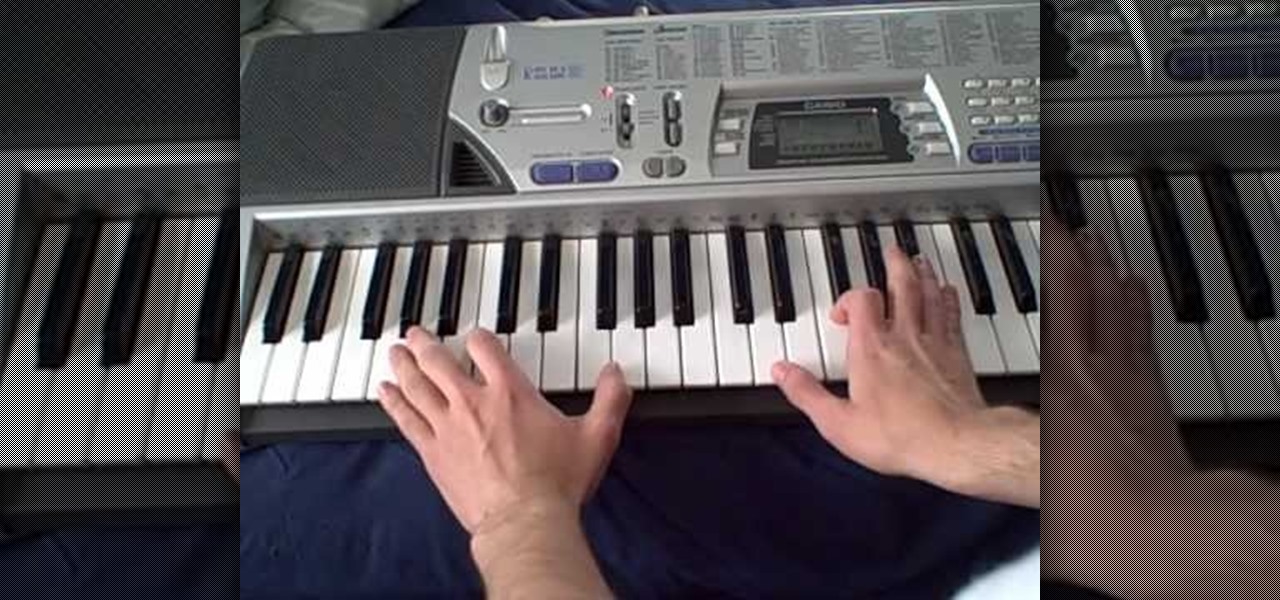
How To: Play "Still Around" on the piano by 3OH!3
Punky pop twosome 3OH!3 are eccentric to say the least. With songs that wax poetic in memorable and tasteful lines like "Do the Helen Keller and talk with your hips," it's impossible to ignore this pop group these days.
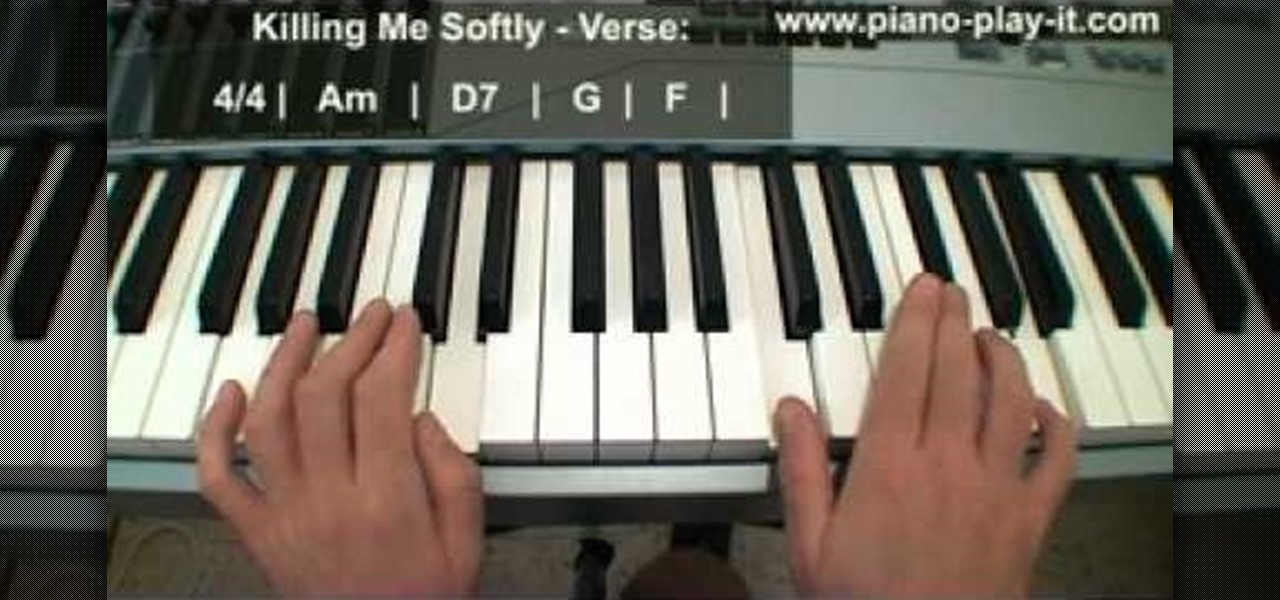
How To: Play "Killing Me Softly With His Words" by the Fugees and Roberta Flack
At one point or another you'be probably been in a relationship that resembles that which Roberta Flack sings about in "Killing Me Softly With His Words." The girl is madly in love with the guy but he's kind of, well, a douchebag who hurts her repeatedly. But she still hangs on.

How To: Play secondary dominant chords on the piano
To understand secondary dominant chords on the piano, it's vital to know what dominant chords are. Generally in a song they're the first note played and the last note played, as well as comprise the most tense point. Secondary chords are dominant chords that match up with other scale degrees in a scale.

How To: Play Guy's "Let's Chill" on piano
In this video, we learn how to play Guy's "Let's Chill" on piano. This is a smooth song written in F minor. The first chord is a D flat major 7, then F, A flat C, A flat, then C. Continue on to play a suspended chord, then an F flat, E flat, F flat, then regular F flat minor. Continue to play through this until you have the introduction finished. Once this is done, continue on through the rest of the song with the same chords throughout the song. In time, the song will come together and the e...
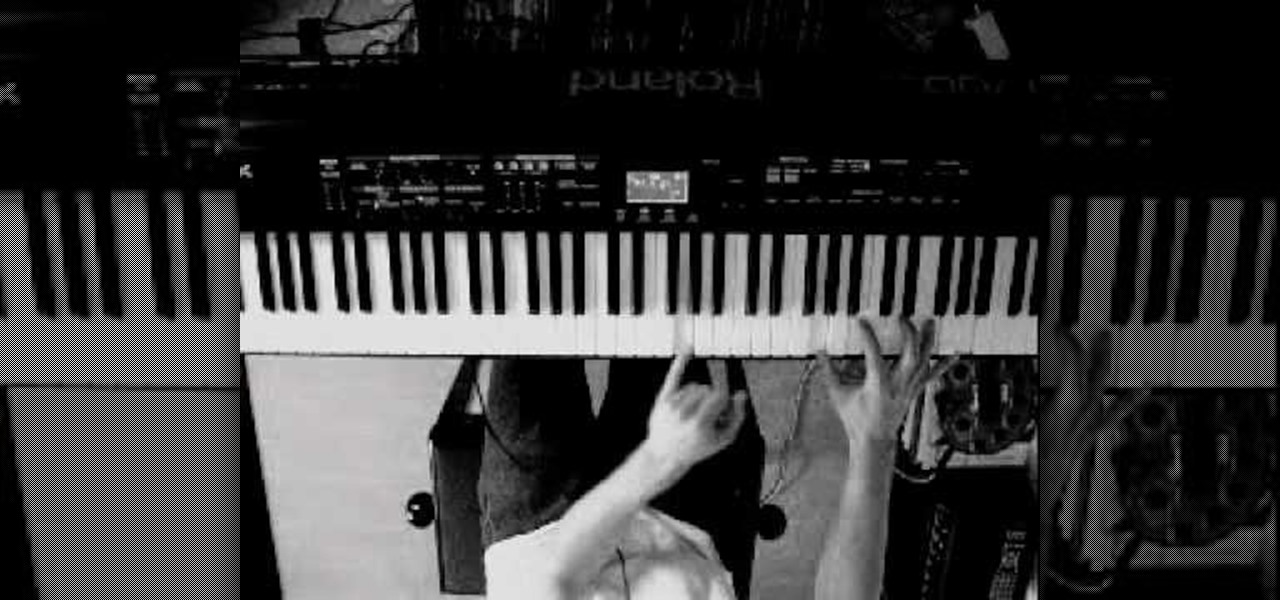
How To: Play "Ballade pour Adeline" by Paul de Senneville
In this video, we learn how to play "Ballade pour Adeline" by Paul de Senneville. This is a very quiet and beautiful song that will take some practicing to get used to. Once you start the song, you may want to break it up into smaller parts so you can learn those before you tackle the entire thing. Once you have the different parts memorized, your fingers will start to remember the movements of where to go. Put the entire thing together and play with the different keys to get beautiful sounds...
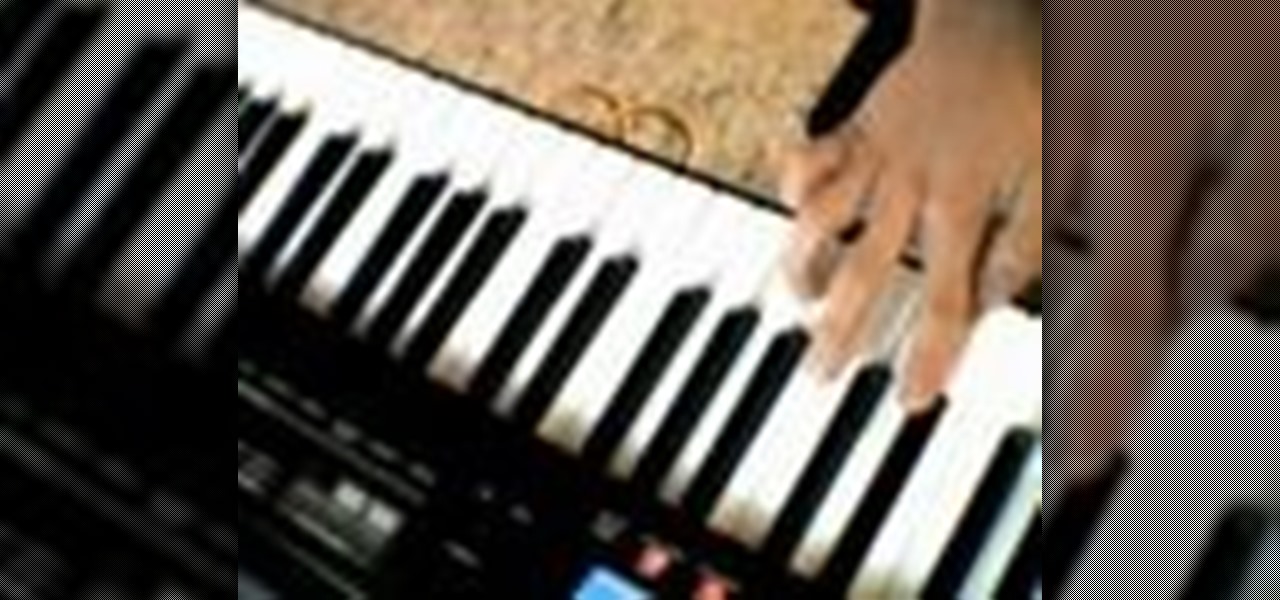
How To: Play the Warner Brothers theme song on piano
In this video, we learn how to play the Warner Brothers theme song on piano. As you learn to play this song on the piano, you will start out slowly. Do the first part of the song and learn the first few keys that you need to play. As you progress, start to learn the different verses. Once you have these down independently, start to combine them all together. Once you finish, go through any spots that you need to perfect. Once you have finished these verses, play all of the verse together and ...

How To: Play "Here Comes the Sun" by The Beatles
In this video, we learn how to play "Here Comes the Sun" by The Beatles. Start out with your hands across the piano with your fingers around the A, E, and C keys. Start off by playing the melody so your fingers can get a feel of how the different keys are played. Go slowly doing different sections of the song, then put it all together. There will be D and F# keys being played, but those will come towards the end of the melody in the song. Once you learn to put all the key together, you can pl...

How To: Play the solo from "In My Life" by The Beatles
In this video, we learn how to play the solo from "In My Life" by The Beatles. You can play this straight, the way it's played on the piano, or another way. If you just play it like this, you are going to have a very difficult time getting the keys to sound correct. The other way you can play this song is to use the chords as well. When you do this, the song will come out with a better sound and be more put together than the other way. Add in the words to the song and sing along as you go to ...
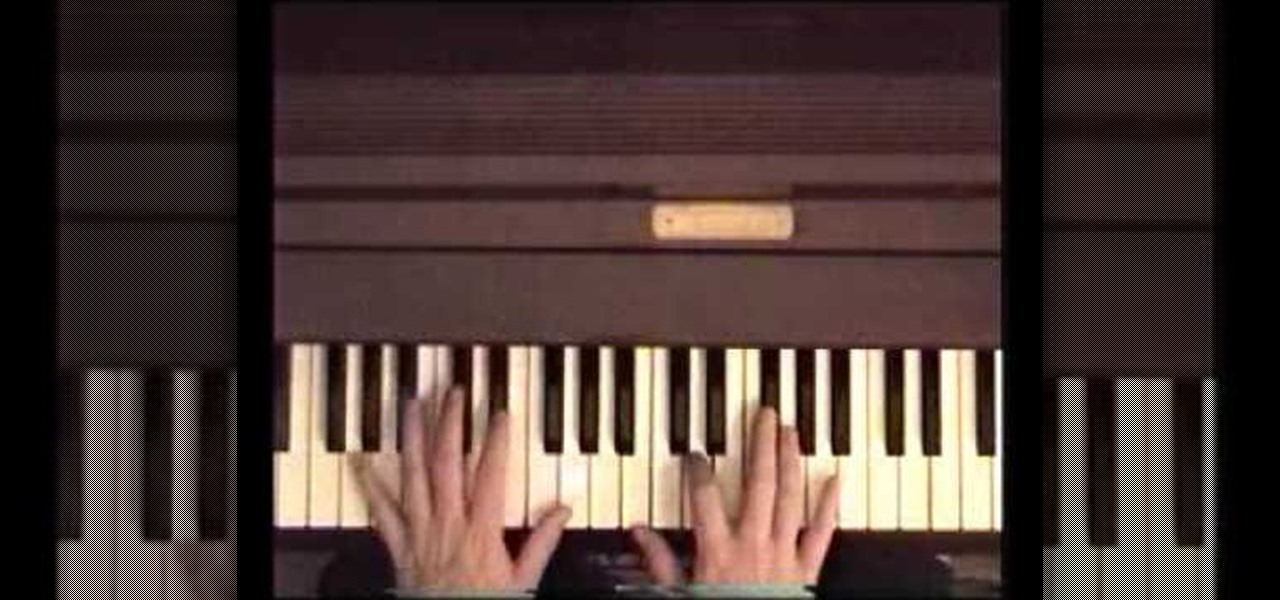
How To: Play "Penny Lane" by The Beatles
In this video, we learn how to play "Penny Lane" by The Beatles. The keys you will play at first are: B, D#, F#, B/D#, F#, and B. There is a style you have to employ to get this to work on the piano. Each note is played separately when you do it on the piano, so don't combine the notes together as you are playing. Make sure you are keeping the notes in sharps. The next notes are: B, D#, F#, A#, D#, F#, and A#, From here, the next ones are the same except with a G# at the end. Continue to play...

How To: Play the song "Teenage Dream" by Katy Perry on piano with sheet music
Katy Perry is a certified sensation, and if she inspires you to play the piano then she's done at least one good thing today. This video will teach you how to play her single "Teenage Dream" from the eponymous album. You can even check out the sheet music at the creators websites here.



